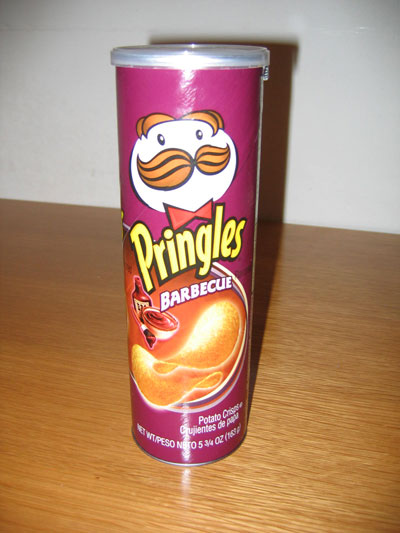
I was hungry the other day at the pharmacy (never a good idea), and so I bought a can — okay, two cans — of Pringles. I know they're horrible for you. A telltale sign of poor nutritional value is a perfect, recurring shape not found anywhere in nature, and the Euclidean geometry of a Pringles chip is rightly described as supernatural. But, in my lightheaded state of hunger in that store aisle, I reasoned that any sane person, if posed with the choice between a Twinkie and a Pringle, would choose the chip, which in its defense has a color resembling potato, and not the unholy yellow gleam of a Hostess sponge cake.
Then I read today that the makers of Pringles successfully argued before a British tax court that the Pringle is not a potato chip. It has a potato content of 42 percent. The rest is corn flour, wheat starch, rice flour, and a host of other substances concocted by modern-day alchemists probably working out of a lab in New Jersey.
Procter & Gamble, the maker of Pringles, made an eloquent case on behalf of their product's unwholesomeness. (The corporation petitioned the court to get out of paying a British sales tax levied on food products.) The Pringle, said one lawyer, does not taste like — or "behave like" — a crisp (the British word for chip). "It has none of the irregularity and variety of shape that is always present in crisps. It has a shape not found in nature, being designed and manufactured for stacking, and giving a pleasing and regular undulating appearance which permits comfortable eating."
It is never a good sign when your food is in the same sentence as the word "manufactured." The word "undulating" should also raise hairs on the back of your head.
The lawyers for the non-chip chip went so far as to suggest in court that most shoppers didn't think of the Pringle as a potato chip (in spite of the fact that, at least in the U.S., the can clearly says "potato crisps" — as you can see in the photo above). This begs the question, "What on God's earth do they think it is?"
Perhaps the Pringle is an example of what Michael Pollan calls "edible foodlike substances." A Pringle is not real food, but an amalgam of food and various artificial dyes, flavors, and preservatives. It's unclear what some of these synthetic substances do to the body in the long term. Recently, a watchdog group called for the banning of artificial food dyes because of research that suggests they contribute to attention and hyperactivity problems in children.
Pollen advises people to buy food from the edges of the supermarket — from the aisles with refrigerated meats and dairy and unprocessed fruits and vegetables — since everything in the middle is not perishable, and therefore laced with preservatives. The pharmacy where I bought my Pringles probably counts as such a dead zone.
Maybe the makers of Pringles should have just taken the sales-tax hit and left us chip eaters in blissful ignorance. What will we as a society do, without our edible foodlike substances?
I think I'll go have some undulating chips now.
Victor Tan Chen Victor Tan Chen is In The Fray's editor in chief and the author of Cut Loose: Jobless and Hopeless in an Unfair Economy. Site: victortanchen.com | Facebook | Twitter: @victortanchen
- Follow us on Twitter: @inthefray
- Comment on stories or like us on Facebook
- Subscribe to our free email newsletter
- Send us your writing, photography, or artwork
- Republish our Creative Commons-licensed content

